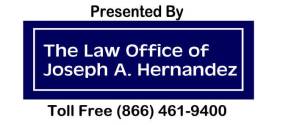



|
|
|
Brachial Plexus PalsyContact us for a Free Consultation by emailing us atFree-Consultation@Birth-Injury-Malpractice-Law.com or calling us at 866-461-9400 if your son or daughter suffers from a brachial plexus birth injury. General Information About Brachial Plexus Birth Injuries Approximately 1 to 2 babies in 1,000 suffer a Brachial Plexus injury at birth. Many are the result of preventable injuries. An injury to the Brachial Plexus affects the nerves that control muscles in the shoulder, arm, or hand. Any or all of these muscles may be partially or fully paralyzed as a result of the injury. The extent of your child's disability depends on which nerves are injured and the severity of the damage. Signs Your Child Has A Brachial Plexus InjuryThe following are possible symptoms that your child may have a Brachial Plexus injury.
Sometimes a baby's shoulder becomes stuck during delivery. This situation is called Shoulder Dystocia. Unfortunately, doctors, nurses, and other medical staff sometimes panic when this happens and use inappropriate techniques, such as using excessive force to pull on the head. This can result in a brachial plexus injury. Is A Brachial Plexus Birth Injury Preventable?Anticipating the possibility of Shoulder Dystocia and preparing properly for the eventuality is critical. In particular, doctors should carefully consider the impact of risk factors such as,
If the risk of shoulder dystocia is sufficiently high, a C-section may be necessary. If Shoulder Dystocia occurs during a vaginal delivery, there are a number of different procedures that can be tried, in order, so as to deliver the baby without causing damage to the brachial plexus nerves. Diagnosing The InjuryThe birth injury is initially diagnosed by means of observation and physical examination of the newborn baby. If initial treatment fails to resolve the limitations caused by the injury, a more comprehensive examination is normally performed by a pediatric neurologist, often between six to twelve months after birth. Twoo of the most common tests that can be performed are:
There are 4 main types of Brachial Plexus Injuries:
The diagnosis can be more complicated than simply one of the four groups above. For example, several nerves in the Brachial Plexus may be injured and the nerves may have different types of injuries. Treatment for Brachial Plexus Birth InjuriesThe initial course of treatment typically follows a diagnosis made by history and physical examination. At this stage, treatment often consist of physical therapy. If the injury is mild a course of physical therapy may be able to help the child progress or recover from the injury. If therapy does not result in significant progress, especially after six weeks to six months, and evaluation using diagnostic testing reveals a more serious injury surgery may be recommended. Types of Surgeries include:
In the most severe cases it may take years before the full extent of any permanent impairment can be determined. Brachial Plexus Birth Injuries and Medical MalpracticeMany of the injuries to the Brachial Plexus nerves happen during birth. During childbirth, the shoulder of the baby can get caught and stretched behind the mother's Pubic Symphysis bone (part of the Pelvis bone). If the shoulder gets caught this way, a condition known as Shoulder Dystocia, the Brachial Plexus can be compressed, stretched or torn if excessive pressure is used to try to complete the delivery of the baby. Below are some examples of negligent care on the part of doctors, nurses, and other health care providers that can result in Brachial Plexus injuries:
If your son or daughter has a brachial plexus injury and you suspect that the injury resulted because a doctor, nurse, or other health care provider failed to provide adequate care during the pregnancy, or during the labor and delivery of your baby, you should immediately contact an attorney.
Law Office of Joseph A. Hernandez, P.C. Thank you for visiting the Law Office of Joseph A. Hernandez. The material located on our law firm's web site is intended to be a resource for present and prospective clients for informational purposes only and is not intended to be legal (or medical) advice. This web site is not an offer to represent you. The act of sending electronic mail to our firm or to Attorney Hernandez does not create an attorney-client relationship and does not obligate the Law Office of Joseph A. Hernandez or Mr. Hernandez to respond to your email or to represent you. No attorney-client relationship will be formed unless you enter into a signed agreement of representation with the Law Office of Joseph A. Hernandez. You should not act, or refrain from acting, based upon any information at this web site without seeking professional legal counsel. Under the rules of the Supreme Judicial Court of Massachusetts and other rules, this material may be considered advertising. Licensed to practice law in the State of Massachusetts. This website does not represent other licenses, or certifications of specialization or expertise that may be available in certain states. |